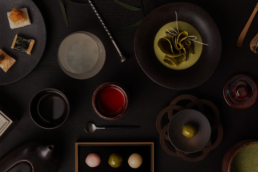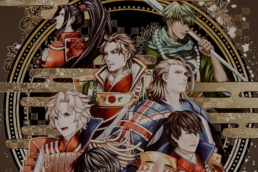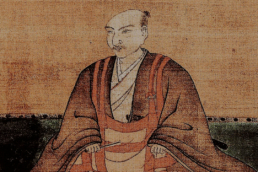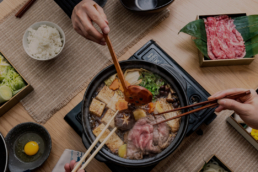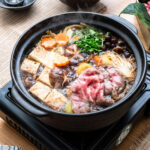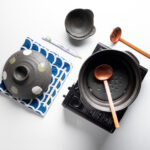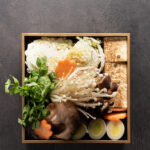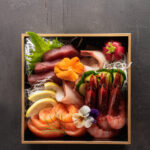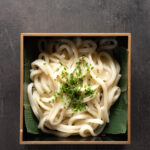TENOHA MILANO: Afternoon tea
Choose to spend Valentine's Day in a totally different way! Do you want to live and let your loved ones live absolutely unrepeatable moments? Now you can, thanks to TENOHA Milano, which always has something new and sweet in store for you!
TENOHA &| TASTE: Afternoon Tea per San Valentino
Autore: SaiKaiAngel

And we are talking about a sweet surprise, TENOHA AFTERNOON TEA is a unique, special experience that only our favourite corner of Japan here in Italy can give us. Would you like to spend a special day and make your loved one spend it too? Valentine's Day in the name of Japan and a unique experience on the iconic tatami at TENOHA Milano! Want to know more? We have some pictures below that will surely make you even more curious!
10-14 February: Valentine's Edition
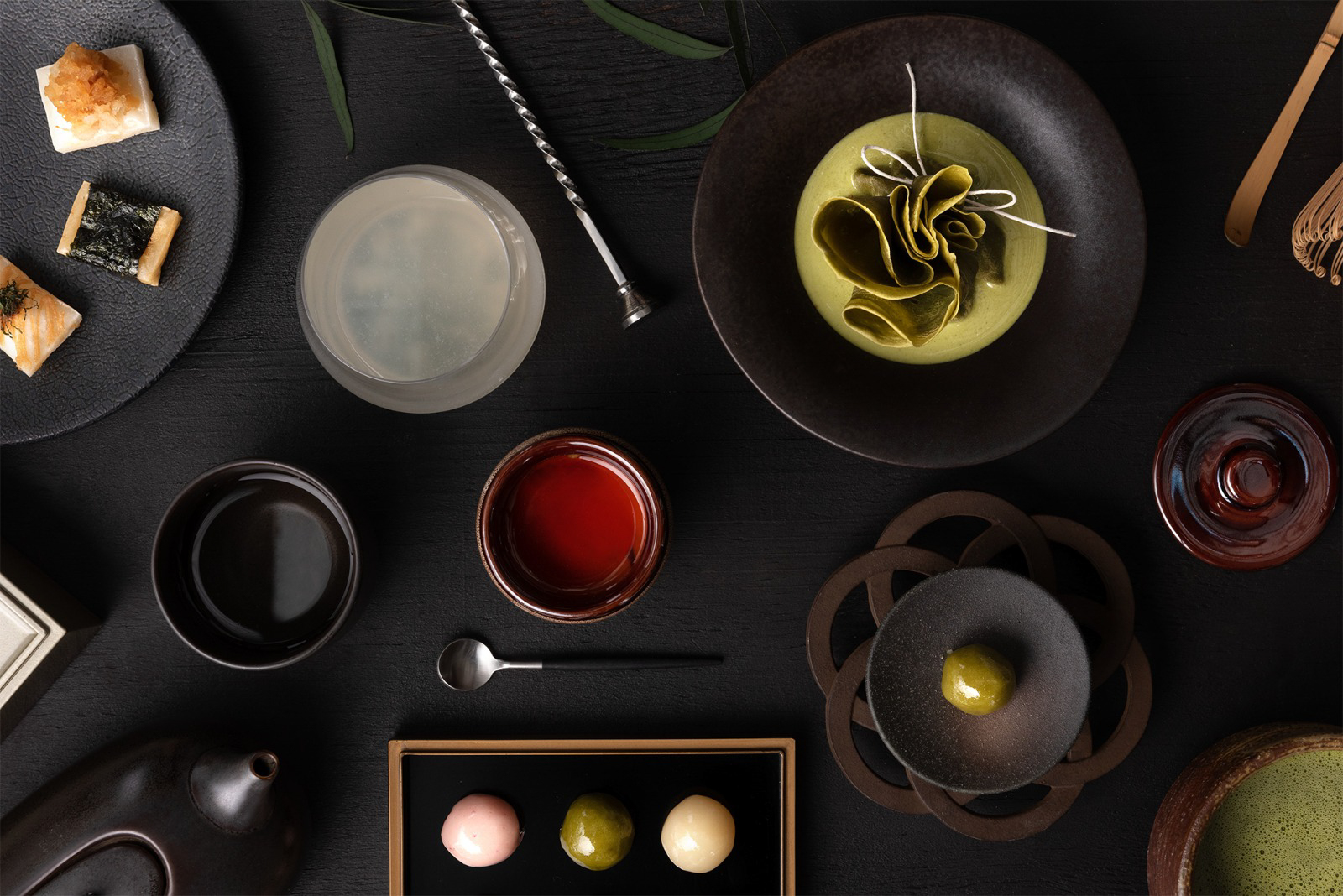

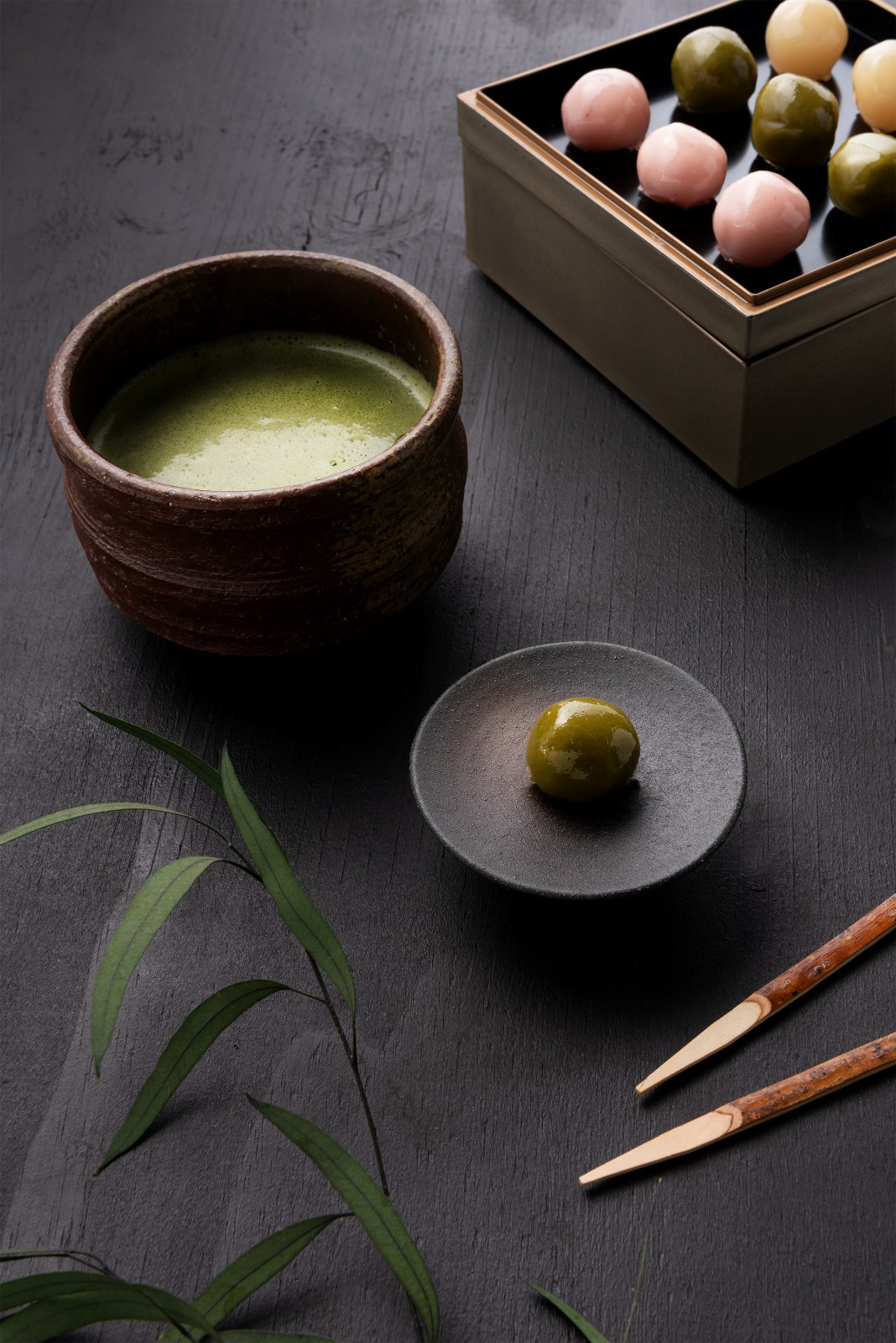

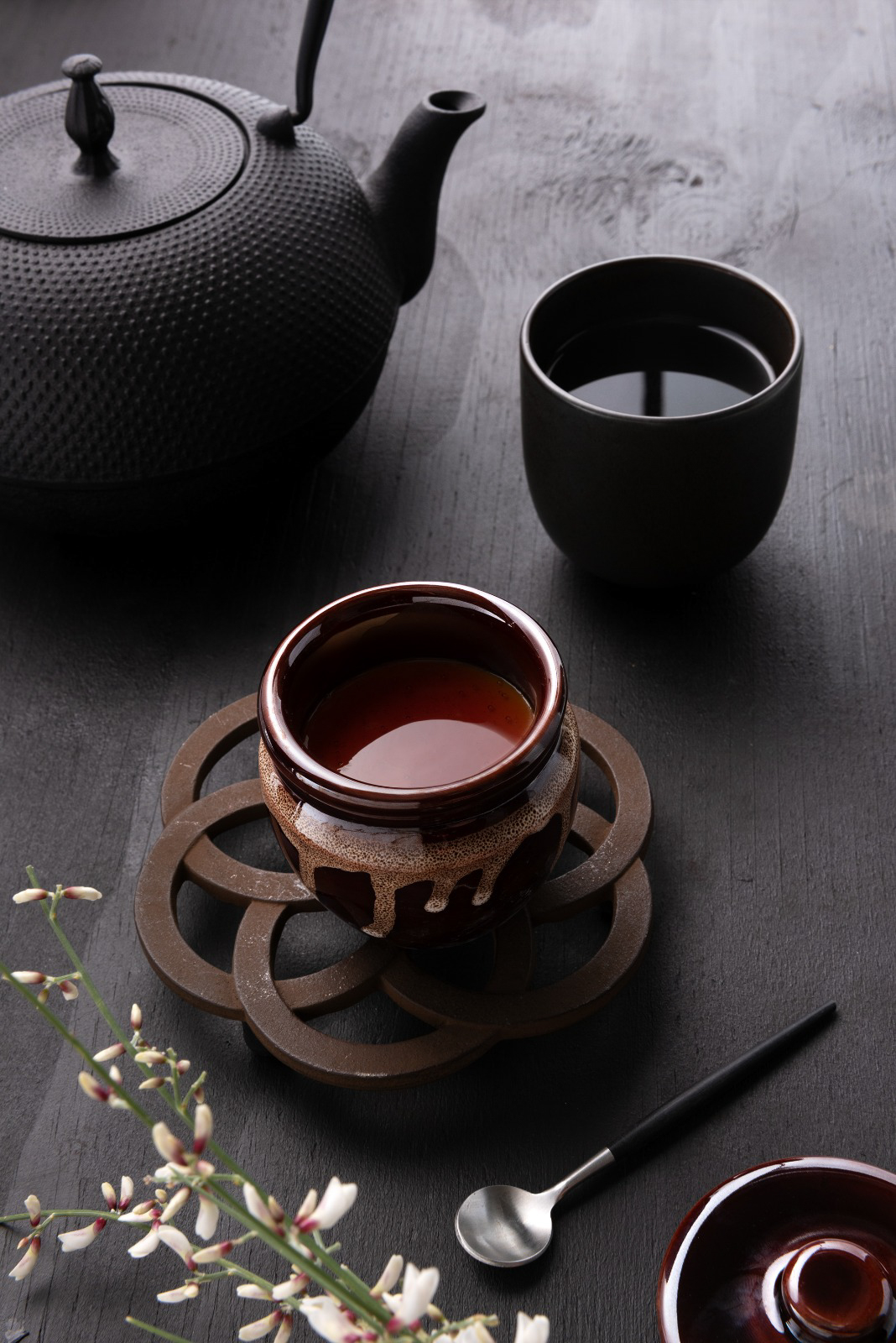

The tradition of Japan has never been closer. For Valentine's Day, let's immerse ourselves in a unique and traditional Rising Sun experience on the tatami at TENOHA! Close the curtains and enjoy tea, drinks and handcrafted Japanese sweets in total relaxation! Only together with your loved ones will you be able to enjoy a tasting that you will hardly ever experience again. A few hours in the peace and quiet of the Japanese experience, with the best teas and sweets and of course the usual enormous attention and pampering that you can only find at TENOHA. Choose the day and time of day that suits you best!
Details
When: Two time slots: 14:00 ~ 16:00 | 16:00 ~ 18:00
Where: TENOHA MILANO — Via Vigevano, 18, 20144 Milano
Cost: 35€/pax (min. 2 people)
Remember, both in respect of security and of your privacy, booking is always compulsory! To do this you can use the following email address and phone number: taste@tenoha.it | (+39) 02 8088 9868
For more information, please click on the following link: https://www.tenoha.it/taste/tenoha-afternoon-tea/
photo credit: Anna Daverio
Samurai flags at the Tokyo Olympics
Samurai are still very respectable and important figures, so as the Tokyo Olympics approach, a content producer is hoping to spark greater understanding between nations with anime characters wearing traditional Japanese clothing.
Flags of countries revised as samurai for Olympics
Author: SaiKaiAngel | Source: The Japan Times
Kama Yamamoto along with other artists launched World Flags in 2018 with the idea of helping people around the world become familiar with their cultures in a fun way and says, "I want the project to be recognised globally as something that can unite the world through anime and samurai."
Yamamoto's idea is to use characters in samurai or traditional Japanese clothing to illustrate different nations, their flags and increase interest in Japan.
Here are some examples:
the Peruvian character Vargas is depicted as a ninja in red and white carrying a leaf-shaped kunai and, in the case of Chile, the condor, which is the national bird, is perched on the shoulder of a samurai, while the Canadian character wears a red and white kimono with a maple leaf on its sleeve.
Yamada says a lot of work is underway to get the initiative officially recognised by the Tokyo Games organisers.
Yamamoto's background is in educational personification books; he has drawn manga characters to represent jobs ranging from tapioca shop owners to web designers. The books are aimed at children and include information on average salaries and what it entails to better inform children about the choices available to them when they grow up.

photo credits: The Japan Times
The educational purpose remains with World Flags.
There were about 80 characters on the website at the beginning of December, according to marketing producer at Digital Entertainment Asset Hiroshi Tsuruoka. The site is regularly updated with new personified flags.
Characters are introduced on the project's official Twitter page as soon as they are ready. With over 15,000 followers, the page also boasts fan art posted by those inspired by the characters.
However, characters can undergo both physical and "personality" changes in line with advice or criticism from people around the world, helping them to become more suited to the country concerned.
In one case, the Spanish flag, whose character is called Iniesta, was initially portrayed as a bullfighter, but was later transformed into a flamenco dancer following criticism that bullfighting was a controversial topic in the country.
The project got what Yamada called its first "big break" in the summer of 2019, when the Chinese flag depicting Aaron was widely shared online. Yamamoto soon began receiving interview offers from Chinese media, along with offers to create a range of merchandise e.g. mouse pads that are currently available online.
The characters are illustrated by a group of artists brought on board by Yamamoto, many from his previous projects.
"Some of the illustrations are by full-time artists, but others are drawn by people ranging from housewives to vets who draw as a hobby," he says. The flags are assigned by Yamamoto, who brainstorms a rough idea of the character design, to individual artists based on their illustration styles.

photo credits: The Japan Times
While Yamamoto works to finish personifying all the countries, a number of people from smaller nations have expressed delight at finding their respective flags in samurai form.
Some, including Mexico and Venezuela, have even received framed images of their personified flags at their respective embassies in Tokyo.
"We believe that an anime-style character representing Mexico can be an ideal way to convey the long-standing friendship that exists between the Mexican and Japanese people," Emmanuel Trinidad, the cultural affairs adviser at the Mexican embassy in Tokyo, said in an email.
"Every comment received about it on social media seems to praise the fact that the work goes beyond any stereotypical image and instead presents a fresh and more modern approach to the characters representing the countries in general."
The project was first published as a book last year, with illustrations of the characters and information ranging from national demographics to the number of Olympic medals won by the nation in question.
They would also like to turn it into an anime or superhero movie in the future, with the characters joining forces to fight an enemy to save the world.
"The story will not have a protagonist, and all the characters will work together for a common goal," says Yamada.
Yamamoto initially hoped to complete the project in 2020 ahead of the Olympic Games before they were postponed due to the new coronavirus pandemic. Now he is aiming to present around 200 personified flags by the end of this year. will he be able to achieve his goal of uniting countries with Japan? we are sure he will. Let's look forward to it and enjoy these works in the meantime!
Japan History: Asakura Yoshikage
Asakura Yoshikage (12 October 1533 - 16 September 1573) was a Japanese daimyō of the Sengoku period (1467-1603) who ruled a part of Echizen province.
Asakura Yoshikage, head of the Asakura clan
Author: SaiKaiAngel
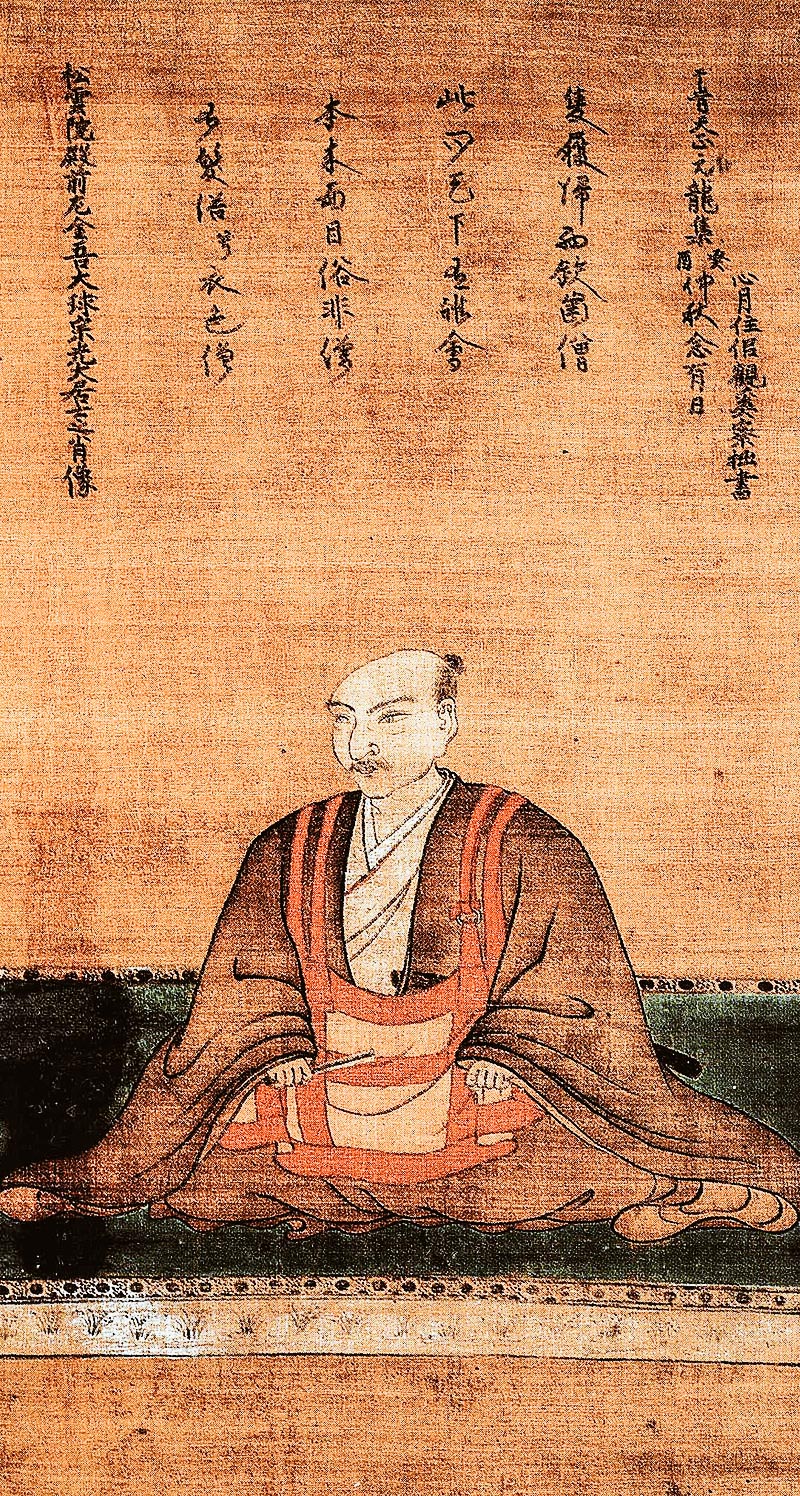
photo credits: wikipedia.org
Asakura Yoshikage was born in the Ichijōdani castle of the Asakura clan in Echizen province. His father was Asakura Takakage and his mother seems to have been the daughter of Takeda Motomitsu.
Yoshikage succeeded his father as head of the Asakura clan and lord of Ichijōdani Castle in 1548, demonstrating great skill in political and diplomatic management, especially through his negotiations with the Ikkō-ikki at Echizen. Thanks to them, Echizen enjoyed a period of relative peace compared to the rest of Sengoku-period Japan, becoming a place for refugees fleeing violence in the Kansai region. Ichijōdani even became a centre of culture modelled on the capital of Kyōto.
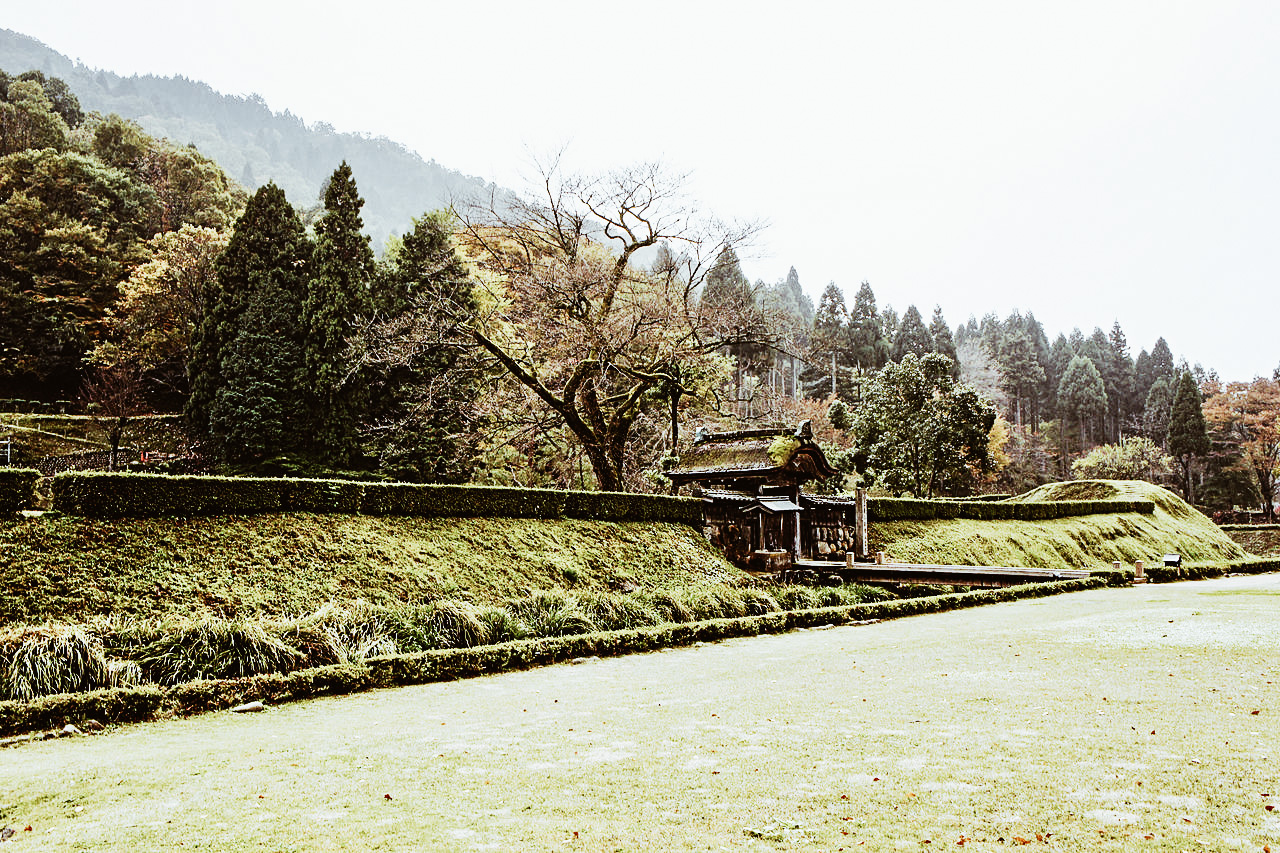
Ichijōdani Asakura Family Rovine storiche | photo credits: wikipedia.org
Conflicts with Oda Nobunaga
After his capture in 1568, Ashikaga Yoshiaki appointed Yoshikage as regent and enlisted the help of the Asakuras to drive Nobunaga from the capital. In 1570, Oda Nobunaga then invaded Echizen and succeeded in invading the castle due to Yoshikage's lack of military skill. Azai Nagamasa, Yoshikage's brother-in-law, attacked Nobunaga with the Asakuras at Kanegasaki, but Nobunaga withdrew his troops and managed not to be captured. At the Battle of Anegawa, Yoshikage and Nagamasa were defeated by the superior forces of the Oda and Tokugawa clans led by Nobunaga and Ieyasu.
Death
Yoshikage fled to Hiezan after the battle and attempted to reconcile with Nobunaga, which enabled him to avoid conflict for three years. In 1573, during the siege of Ichijodani Castle, Yoshikage was betrayed by his cousin, Asakura Kageaki, and was forced to commit seppuku at the age of 39. His death also destroyed the Asakura clan.
TENOHA MILANO: Sukiyaki Experience
TENOHA Milano amazes us once again and does so with a special delivery. We are talking about the SUKIYAKI EXPERIENCE! A unique opportunity to have Japan at home.
TENOHA &| TASTE: Sukiyaki Experience
Author: SaiKaiAngel
Surely you know the best meat in the world, WAGYU, right? Now, thanks to Sukiyaki, you can have it right at home!
Let's first explain what this dish is: Sukiyaki is a very important dish in the Japanese culinary tradition. We are talking about thin cuts of beef simmered in a pot together with tofu, mushrooms, udon and vegetables. You can also dip the cooked meat in a raw egg to maximise the subtlety of the Wagyu's flavour.
We're talking about the world's best Wagyu here, not just any meat, but Wagyu Kagoshima 'A5'.
Wagyu beef is characterised by a high intramuscular fat density that makes the meat extremely tender, and the famous 'A5' grade KAGOSHIMA Wagyu boasts the best flavour of all.

Kagoshima was ranked first among all regions in Japan at the 2017 "Wagyu Cattle Exhibition".
TENOHA PROVIDES YOU WITH EVERYTHING
Sukiyaki delivery also includes full service. It will be delivered to your home:
✓ SUKIYAKI POWDER
✓ LADLES and POTS
✓ FUROSHIKI and BACCHETTE
✓ INDUCTION PLATE
✓ BROTH (original recipe made of soy, sugar and mirin)
Make the Sukiyaki you want, it's very easy, you can do it easily with the link below and if you use the code SUKIYAKI25, you'll get a 25€ discount on the total order at checkout: https://sukiyaki.tenoha.it/
Opening Hours
DINNER: from 18:00 to 21:00
LUNCH: from 12:00 to 14:30
*LUNCH service available from Thursday to Sunday.
Don't miss this opportunity, TENOHA is coming to you! Are you ready for it? Impress your friends and family with this unique and rare experience!
photo credit: Anna Daverio
Business Focus: The importance of communication and marketing in Japan in times of pandemic
Communication has always been important in our lives and in this time of pandemic due to the spread of COVID-19, its essentiality has become even stronger. At a time when we are forced to forego hugs and physical proximity, what would we do without the Internet? Thanks to communication we can get closer to the rest of the world, our door is not closed thanks to the internet.
The importance of communication and marketing in Japan in times of pandemic
Autore: SaiKaiAngel

photo credits: mosaikoweb.com
The COVID-19 pandemic is certainly a very difficult time in which we are all involved, but we try to see the positive in this as well. What do they say? If you feel like you're in a tunnel, decorate it! So, while we are waiting to see the light at the end of the tunnel, we are trying to do everything to save our company and our relationships. The imposed lockdowns are very difficult to manage, but how much have they succeeded in making us realise the importance of the "small" things? I put the word SMALL in quotes, yes, because in this pandemic we have realised how BIG the SMALL things are. How special our normality is. How much we have looked for a hug, even if it is virtual, how much we have reinvented ourselves to keep alive a work project for which we have done so much.
Let's take advantage of this moment to start again even stronger than before, let's take some time to think, reinvent ourselves and prepare for total recovery.
Remember, however, that there are no miracles! You have to rely on the world of social marketing, but not alone. There are specialists in the field, people whose job it is to advise you and accompany you in the world of social marketing and communication without making you run into obstacles (like us).

photo credits: mosaikoweb.com
Never put your business activities on hold.
We are lucky enough to have the internet, why put a job or business on hold? The idea that one day the internet could go from being important to essential has been around for a while. We can attend meetings, we can organise, we can actually work together and stay in touch with our customers, all online. We can also focus on stepping up the content of our social media, of our websites, so that as soon as there is a chance to restart after the pandemic, we will be ready!
If our shop is closed, why take away the possibility of creating an e-commerce to continue selling our products? If we haven't felt the need to do so until now, we are now faced with this possibility, which is gradually becoming more and more important. If we can, let's try to build an online channel to communicate and continue our business! Let's also try to 'decorate' it as best we can.
Let's reinforce our corporate values and corporate image online!
Let us be seen, we have the opportunity! Let's not stop events, let's create them online and if we really don't want to do that, let's stop and organise the ones in presence, we have the possibility to do that, let's strengthen our communication network now!
Let's keep in touch!
Many children can continue to study and attend school thanks to Distance Learning, what we all know now as DAD. Is it important? Of course it's a help. If there wasn't this possibility of online meetings, children would surely be completely excluded from teaching and meeting their classmates. Instead, thanks to Distance Learning, students are able to interact with each other and maybe even distract themselves. Distraction in these moments of closure is very important, if there were no possibility to communicate online, we would really be locked out of the world. Perhaps now more than ever we realise how important online communication can be.
Still having doubts? Let's go and see what's happening in the rest of the world and especially in Japan, which has always been our focus.
The importance of communication and marketing in Japan in times of pandemic
Japan has always been very technological, it has always believed, almost more than anyone else, in the importance of online communication and marketing, and in fact it is now certainly at a better advantage than those who have stuck to tradition.
Japan lives with social networks in order to stay in touch with the rest of the world. Let's take a look at the most used social networks in this country with the relative percentages thanks to Statista:
- LINE 77,4%
- Twitter 38,5%
- Instagram 35,7%
- YouTube 23,2%
- Facebook 21,7%
- TikTok 8,1%
- Skype 7,1%
Il caso LINE

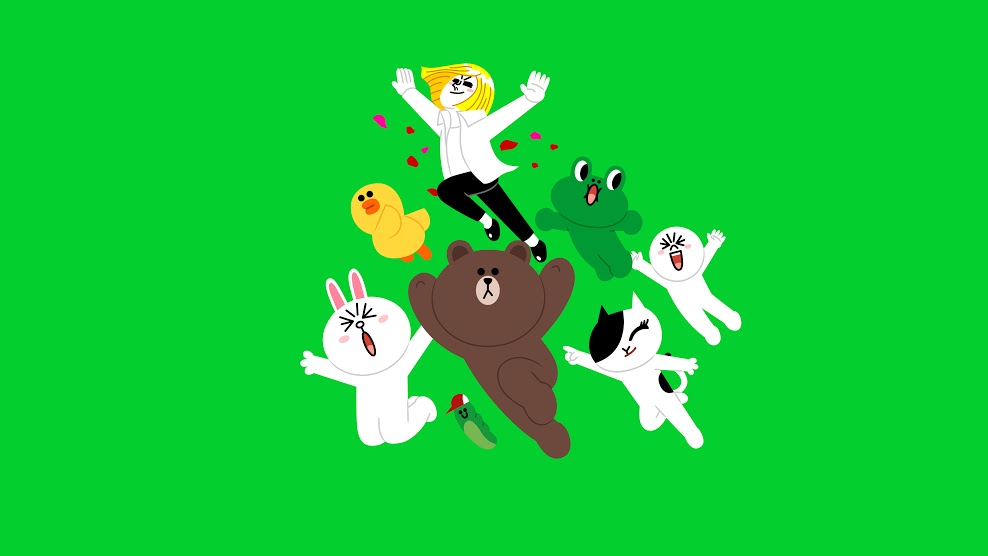
photo credits: google.com
As you can see from the statistics, if in the West we use Whatsapp, Facebook and Instagram more, in Japan they rely a lot on LINE and Twitter. Do you know LINE? It is considered to be the Japanese Whatsapp, and has around 84 million monthly active users in Japan (end of 2020 statistics).
What makes LINE so popular?
LINE was born in 2011 from a collaboration with Naver, a South Korean platform.
Immediately after the great earthquake in Japan in 2011, most conventional communication channels were disrupted due to power outages. Therefore, official sources turned to online to communicate the news and confirm the safety of friends and family. The app was released for public use later that year, and proved very appealing to Japanese consumers due to its unique and customisable design, allowing for both private and business use.
How do the Japanese use social networks?
Compared to neighbouring countries, Japanese people used social networks 65% compared to 88% in Taiwan and 87% in South Korea. In contrast, as of January 2019, Japanese internet users spent an average of 4.8 hours a day with digital content, while Japanese 18-34 year olds used up to six hours. According to a survey, the main reasons for using social media among the younger generation are the convenience of gathering and sharing information, as well as connecting with friends and colleagues.

photo credits: epigeum.com
We have this moment to think about it and to reactivate as soon as possible. this has always been our job and now we finally realise that it has never been more useful. It was already before, but now it has become essential. We are ready to accompany you and are you ready for the (online) rebirth?
5 must-see destinations for 2021
We all need to feel free again, why not do it as soon as everything ends with special destination Japan? We are called Japan Italy Bridge, obviously we love Japan, but we recommend it to everyone. Those who have been there will want to return, those who haven’t are dreaming of going there.
The 5 destinations in Japan not to be missed according to Japan Italy Bridge
Author: SaiKaiAngel
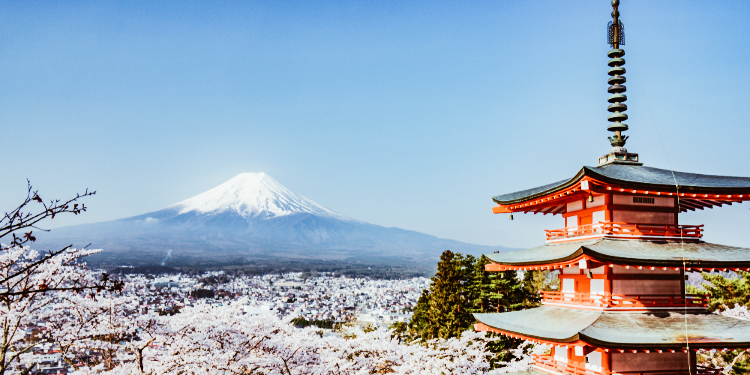
photo credits: expat.com
Japan should be seen and experienced, because each of its smallest part can give us something unique, can enrich us with experience and tradition, if you rely on the experts of JNTO you can go on the safe side! Japan is not only an unmissable destination, but it’s also completely safe, with all its attentions and precautions. With JNTO you will always be guaranteed the right distance, temperature detection in stores and places of interest, protections such as the mask. Safe, reliable and... absolutely dreamy.
You surely know the usual cities to visit, but this time we would like to show you other places that we particularly like. Are you ready? Start packing your bags for your dreamy and safe travels!
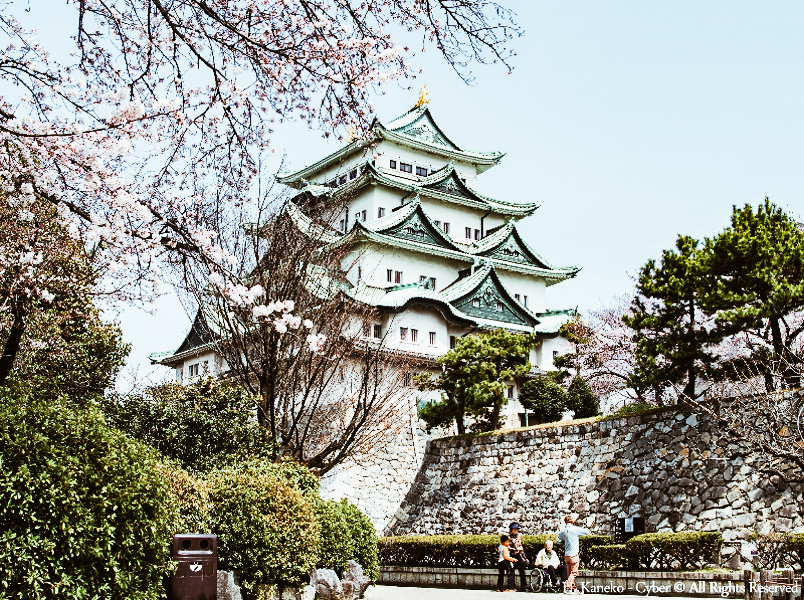
photo credits: viahero.com
Nagoya
Nagoya is a city in the Chūbu region of Honshū Island in Japan, with a port on the Pacific Ocean and two airports, including the new Chūbu-Centrair International Airport, which opened on February 17, 2005.
What to see in Nagoya
First and foremost, we believe the Atsuta Shrine is the most important. This shrine, founded over 1900 years ago is one of the oldest Shinto shrines in Japan. Here, for is kept the sword Kusanagi no tsurugi, one of the Three Sacred Treasures of Japan. This treasure, however, is not on display, but visible only to the emperor and a few monks. The shrine is located in a very serene forest to visit to relax.
Also, not to be missed is Nagoya Castle which was the residence of the Owari branch of the Tokugawa family, built in 1612 by order of Tokugawa Ieyasu. In spring and autumn, you can find a variety of flowers and plants absolutely unique in the world, are you curious to see them?
The Tokugawa Museum of Art is now where the residence of the Owari branch of the Tokugawa family once stood and collects and displays some of the family's great artistic heritage. The collection includes samurai swords and armour, costumes, tea ceremony utensils, books, maps and scrolls from the Genji Monogatari. Near the museum is a beautiful Japanese garden, the Tokugawa-en.
Osu Kannon Temple, on the other hand, is a Buddhist temple located in the centre of Nagoya. The temple houses a rich collection of ancient Japanese and Chinese texts.
Nagoya is home to very important museums, including The Railway Museum that exhibits ancient steam locomotives including the legendary C62 portrayed in the anime Galaxy Express 99 and the Toyota Museum of Industry and Technology that traces the evolution of manufacturing processes and aspects of industrial technology.
Kobe
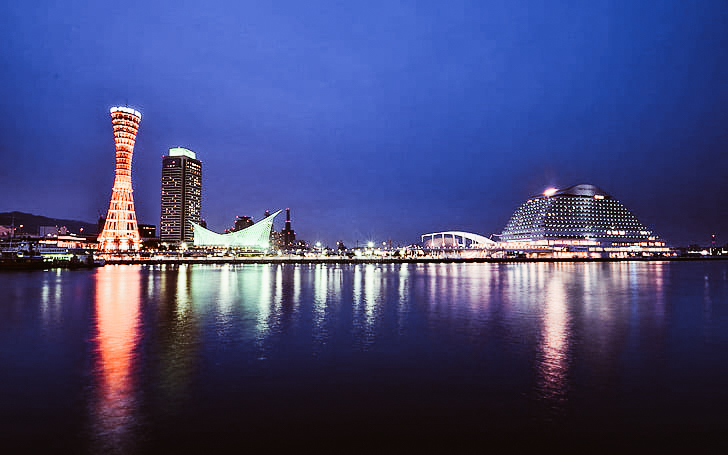
photo credits: wallpaperflare.com
Kōbe is located on the island of Honshū. For about six months in 1180, it was the capital of Japan, when Emperor Antoku moved to Fukuhara kyō, which was located in today's Hyōgo-ku city district.
What to see in Kobe
A place not to be missed and enjoyed completely is the Shin-Kobe and Nunobiki Herb Garden Cable Car that starts near Shin-Kobe Station. On the way up, you'll pass by the Nunobiki Waterfall and Nunobiki Herb Garden but the focal point of the ride is at the observation deck located right next to the top station, which offers spectacular views of Kobe both day and night.
Also take a trip to Sorakuen Garden which was part of the residence of Kodera Kenkichi, former mayor of Kobe opened to the public in 1941.
Nostalgia for parks? Meriken Park is a mix of nature and modernity. Along with the greenery, you can range up to a collection of modern art installations. In this park, you can find the red harbour tower and the Maritime Museum.
The Kobe Museum was opened in 1982, with collections from the Kobe Archaeological Museum and the Namban Museum of the Arts. The museum's permanent exhibition offers a collection of maps from different regions and eras of Japan, as well as artefacts representing Japan's trade with foreign countries.
You can't leave Kobe before making more than a quick trip to the Arima Onsen, a famous spa town in a natural mountain setting. Your relaxation is assured!
Delight your senses, delight your eyes as well at the Akashi Kaikyo Bridge. At over 4 km long, it is the longest suspension bridge in the World. The bridge connects the island of Honshu to the island of Awaji.
In Kobe, we find a museum not to be missed, the Earthquake Museum. On January 17, 1995, at 05:46, the city of Kobe was hit by the Great Hanshin Awaji Earthquake, causing the death of over 5000 people and the destruction of tens of thousands of homes.
The museum, which opened as a memorial in 2002, includes a large theatre with a screen that plays realistic images of the earthquake's brutality, and various interactive games on disaster prevention.
To end our visit to Kobe, let's enjoy a visit to the Sake Distillery! The Nada district in Kobe is the major sake production site in the region, due to its good availability of high-quality rice, suitable water, and favourable weather conditions for producing the alcoholic beverage.
Sapporo
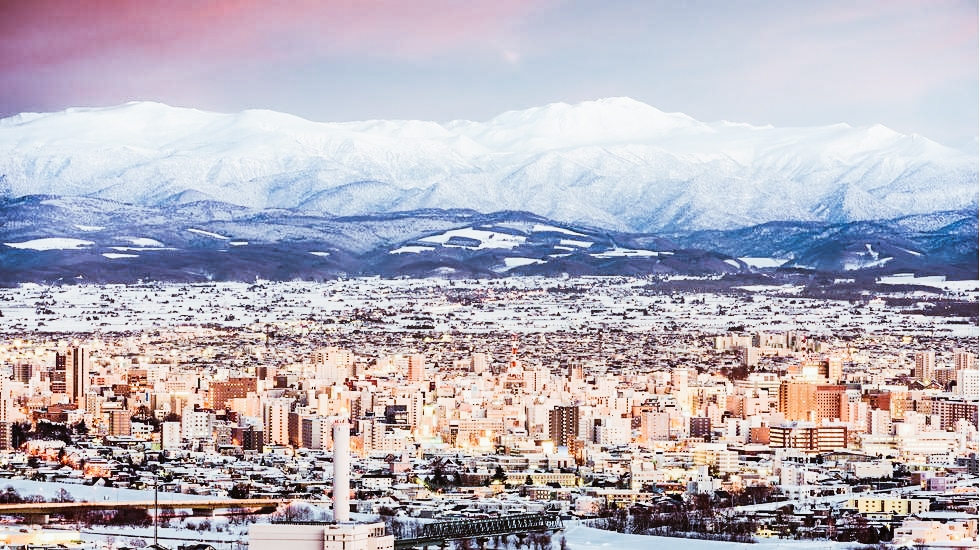
photo credits: suitcasemag.com/
Sapporo is a Japanese city, capital of the Hokkaidō prefecture, located in the southwestern part of the island of Hokkaidō, known for hosting the 1972 Winter Olympics, the first held in Asia, and for the famous Snow Festival that attracts over 2 million tourists from all over the world.
What to see in Sapporo
The historic village of Hokkaido
Of course, we start with the Hokkaido Historical Village, which is an open-air museum. 60 buildings from the past with various sections including towns and villages Don't miss these moments!
Instead, ìthe Sapporo Snow Festival (Sapporo Yuki Matsuri) takes place every February in Sapporo for a week. Born in 1950 when high school students started building snow statues in Odori Park, it is now a big event with spectacular snow and ice sculptures that attracts millions of visitors every year. In contrast, the Okurayama Observatory originated from the 90-meter ski jump used in the 1972 Winter Olympics! A must-see attraction, right in the Okurayama Ski Jump Stadium.
Want to relax after a long walk? Here for you is Moerenuma Park which is a park in the northeast of Sapporo surrounded by a swamp, a unique place that you definitely can't miss.
Here we are at the Hokkaido Historical Museum which documents the history of Hokkaido's development. You can find and see, in chronological order, the entire history of the prefecture from 20,000 years ago, to the post-war years after 1945.
Hungry? Shiroi Koibito Park is a chocolate company. Have you ever tried the Shiroi Koibito cookie? In case you've never tried it, it's two thin butter cookies with a layer of white chocolate in between. This is one of the top souvenirs in Hokkaido!
Thirsty? After chocolate, a good beer suits us perfectly, so we recommend the Sapporo Beer Museum.
In Japan beer was born in Hokkaido in fact, Sapporo is one of the oldest and most popular brands in the country. This beer is produced, precisely in Sapporo, in 1877 and is famous throughout the world, you will have happened to find it in restaurants here in Italy! The museum will show you the production process of beer and not only that! You can end the visit with a unique tasting!
Our visit ends in relaxation in the Botanical Garden that has a mainly didactic purpose, apart from being a pleasant break for visitors. In our opinion absolutely not to be missed, especially if you are looking for a moment of peace during the excursions and visits.
Kamakura
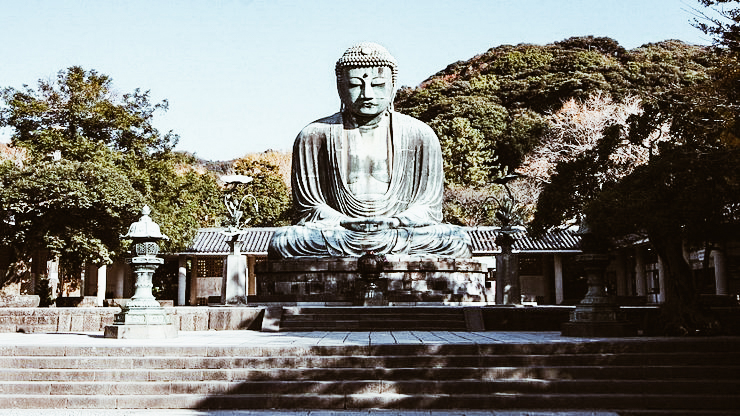
photo credits: japan-guide.com
This is a very important place that we at Japan Italy Bridge absolutely recommend. We are talking about Kamakura, a tourist and also seaside resort easily accessible from Tokyo. If you need a moment of relaxation during your trip to Japan, you can count on Kamakura.
Just think that Kamakura is facing the ocean, with its beach about 2 km long that takes two different names, Yuigahama Beach and Zaimokuza Beach. All around are hills and forests, crisscrossed by various trails. Among these is the Daibutsu path that leads from the great buddha to the Kita-Kamakura station, the Genjiyama path that starts from the Jufukuji temple and connects to the Daibutsu path, about at the height of the Zeniarai Benten temple, the Gionyama path near the Myohonji temple and the long Tenen path that connects the Kenchoji temple to the Zuisenji and Jomyoji temples.
During the Heian period it was the capital of the Kantō region and in 1192 the shogun Minamoto no Yoritomo moved his new capital here, transforming Kamakura din a real political centre of Japan.
What to see in Kamakura?
Kamakura is mainly known for its temples and altars and the one that we loved the most perhaps because of the bond that we feel towards this family of Samurai, is the shrine Tsurugaoka Hachimangu. The shrine is dedicated to Hachiman, the patron god of the Minamoto family and Samurai in general. On a terrace at the top of a staircase you can find the main hall with a small shrine museum, which displays various treasures such as swords, masks and documents. Next to this grand staircase, you could find a beautiful gingko tree that delighted visitors' eyes with its golden color every autumn, which unfortunately did not withstand a storm in 2010. Before entering the staircase, you can find the Maiden, a stage for dance and music performances.
The large statue of Amida Buddha, on the other hand, is located in the Kōtoku-in temple and is the most important statue in the country. Think that the temple in which it was located was destroyed during a tsunami in the fifteenth century, but the statue resisted and since then it is outdoors. The town is also home to the tombs of Minamoto no Yoritomo and Hōjō Masako. Engakuji Temple is one of the main Zen temples in eastern Japan, founded by the ruling regent Hojo Tokimune in the year 1282.
We move on to Hasedera Temple famous for its eleven-headed statue of Kannon, the 9.18-meter-tall goddess of mercy. The Kannon museum displays some of the temple's treasures, including Buddhist statues, the temple bell and a scroll. Also beautiful is the location of this temple, built along a wooded hillside quilted with small lakes.
As we said, Kamakura is the place of temples and shrines, so we point out other names to visit: Kenchoji, The Zeniarai Benten (very important for tradition if you want to wash your money!) and Zuisenji.
Obviously, there are restaurants where you can taste the delicacies of the place.
Hakone

photo credits: gaijinpot.com
Another must-see destination in Japan, in our opinion, is Hakone. Easily accessible from Tokyo, it is a place that can offer you not only relaxation, but also unmissable experiences. Here is our virtual tour of Hakone!
What to see in Hakone
The first thing to see is definitely Lake Ashi. We left our hearts on that lake and the panoramic view of Mount Fuji in the background. A real picture that you will carry inside you for a lifetime. This picture is among other things one of the hallmarks of Hakone. To experience Lake Ashi in all its beauty, you can cross it thanks to three vessels inspired by the ships of the eighteenth and seventeenth centuries. Special views, the important ports of Hakone, Machi and Porto Moto will make your moments unforgettable and you will feel part of that unique picture.
Always in the name of relaxation, remember that Hakone is the city of Onsen or hot springs. Today of the wonderful thermal centres, these Onsen will offer you the heavenly moment of relaxation, pampering all your senses. The Yumoto spring is the oldest and is located near Odawara. You are spoiled for choice, among the names we recommend is definitely Hakone Kamon, with its pools made externally of wood and stone.
After relaxing, it's time to visit the Hakone Shrine, Hakone Jinja which is located right on the shores of Lake Ashi. It consists of many buildings scattered in the forest, with a staircase embellished with lanterns that will make the walk a fairy tale.
Let's move on to the wonderful Odawara Castle built in the mid-fifteenth century in the hands of the Hojo Clan. We are in 1950 when Toyotomi Hydeyoshi defeated the Hojo Clan and reunited Japan. This castle is rich in history, three stories high seen from the outside and four inside. Inside the castle, you can see valuable period furnishings, armour and other items of historical interest and if you really want to enjoy a spectacular view, look at the whole city from the other in the highest floors! For Museum lovers, here is the Odawara Castle Historical Museum, with a very interesting interactive exhibition of objects related to the history of the castle.
On the other hand, the Gora Park is a French-style park with a large fountain, a rose garden and two greenhouses with tropical plants and flowers, a restaurant, a tea room and a Craft house, where you can try various workshops such as pottery making, glass blowing and ikebana composing.
After all that, what to do to extend your life? I'm not kidding, but I'm talking about Owakudani's black eggs. We are in a volcanic area famous for kuro tamago chicken eggs made black by cooking in hot springs. According to Japanese tradition, if you eat kuro tamago you will extend your life by 7 years! You will find them only in Owakudani!
Viaggiare il Giappone in sicurezza
Obviously, these are just some of the places that we propose, but Japan should be seen all. Each temple, each shrine, each garden is a world unto itself, something that cannot be found in other parts of the world. If you want to experience many different worlds in one place, you can't do without Japan. Thanks to JNTO, you can have a personalized and safe trip! With JNTO, especially in this moment of pandemic for COVID-19, you can explore Japan in absolute safety, visit the places you love without fear and in complete tranquillity. We like to repeat that with JNTO will always be guaranteed the right distance, temperature detection in stores and places of interest, protections such as the mask. Safety first and no risk, to enjoy a trip with a capital V do not be afraid and rely on JNTO! We have done it several times and we can assure you that the experience will be not only unforgettable but also in complete safety!
Also in collaboration with JNTO, don't forget the Hiroshima Hakken menu at TENOHA Milanoa! While waiting to leave, you can enjoy Hiroshima's specialties with this special TENOHA menu sponsored by JNTO Japanese National Tourist Board! This special menu that, with its sake tasting, will keep you company throughout January! The best sake in Hiroshima is here!

Night Emperor, Honshu ichi, Zoka, Itteki Nyukon, Sempuku Shinriki are the sake from Hiroshima that will remain available for you all January with the Sake Tasting! Here are their characteristics:
Honshu ichi
Night Emperor, Honshu ichi, Zoka, Itteki Nyukon, Sempuku Shinriki are the sake from Hiroshima that will remain available for you all January with the Sake Tasting! Here are their characteristics:
‘Zoka’
Junmai Daiginjo is made from "Yamada Nishiki" sake rice grown in a field located about 6 km north of the brewery, using Saijo underground water and the Hiroshima Mori technique. The delicate aroma and sweetness of the transparent and gentle rice harmonize perfectly with the fresh acidity. You can enjoy it cooled with a thin cup or glass of wine. Sake certified with Saijo JAPAN brand)
Itteki Nyukon
This sake has as first material the rice suitable for its preparation. A slightly dry Junmai Ginjo sake that goes well with foods with the right acidity, good both cold and hot.
Sempuku Shinriki 【Nickname】Filled with happiness
Kamiriki rice, which is the origin of Chifuku, is 85% processed and is close to the processing speed of rice from the Meiji and Taisho eras. A bottle full of feelings for the preparation of sake, especially suitable for people who particularly care about Japanese sake.
Night Emperor
Night Emperor is a mixed Hachitan Nishiki based liqueur produced in Hiroshima Prefecture. Versatile liqueur is easy to combine with any dish. Soft taste that takes advantage of the characteristics of fresh water preparation and keeps the alcohol content low while maintaining the taste of koji and rice. Good tasted both cold and hot.
Start planning your trip to Japan and while you're doing it, enjoy the special Hakken of Hiroshima at TENOHA Milano for the whole of January! As you can see, JNTO is close to you at all times, reminding you that Japan is a destination that will give you all the security you are looking for!
Japan History: Ankokuji Ekei
Although Ankokuji Ekei (1539 - November 6, 1600) was a member of the Aki Takeda clan, his year of birth and his father are still uncertain. His year of birth varies from 1537 to 1539 and whether his father could have been Takeda Nobushige or Takeda Shigekiyo.
Ankokuji Ekei, samurai, monk and diplomat
Author: SaiKaiAngel
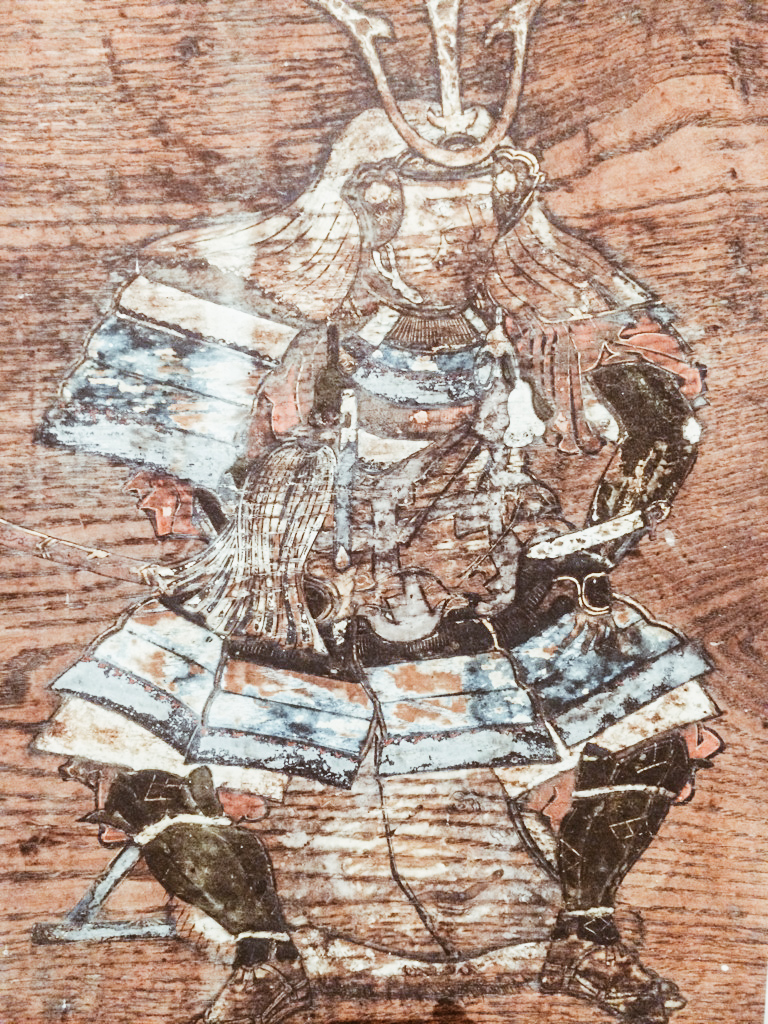
photo credits: samurai-world.com
When the Aki Takeda were destroyed in 1541 by Mori Motonari, Ankokuji Ekei was taken to a safe place in the temple of Ankokuji, which was located in the province of Aki.
At that time, Ankokuji Ekei changed his life becoming a Rinzai Buddhist monk and also a diplomat of the Mōri clan. It was the year 1585 when Toyotomi Hideyoshi praised his negotiations when the Mori clan formally served Hideyoshi. As Hideyoshi's advisor, he even received a feud of 23,000 koku in Iyo province as a reward after the invasion of Shikoku (1585).
In 1586, after the Kyushu Campaign, his possessions were expanded to 60,000 koku. He participated in the war of Imjin, the Siege of Shimoda and lost the battle of Uiryong against Gwak Jae-u.
Despite being a great priest, Ekei led the men for both Hideyoshi and Môri Terumoto. Ankokuji Ekei was present at the Siege of Shimoda in the Odawara Campaign (1590) and in the Korean Campaigns (1592-93, 1597-98) in Terumoto's staff.
In 1600 Ekei joined Ishida Mitsunari and exerted considerable pressure on Môri Terumoto, eventually prevailing on the advice of Kikkawa Hiroie. In the battle of Sekigahara, Ekei commanded 1,800 men on Nangu Hill, positioned near the troops of Hiroie and Natsuka Masaie. When the main armies were engaged around the village of Sekigahara, Ekei and the troops of Môri (commanded by Môri Hidemoto) decided to enter the fray and waited for Hiroie, the vanguard of Môri, to move. Unbeknownst to them, Hiroie had negotiated a secret agreement with Ieyasu and had no intention of moving.
Ekei and the Tokugawas
Ekei and Natsuka had no intention of doing anything so the 25,000 soldiers under Môri command remained inactive. This inactivity sealed a defeat that became devastating after the betrayal of Kobayakawa Hieaki, and once the matter was clearly decided, Ekei and his comrades thought it was better to retreat in a hurry.
Ekei tried to flee to To-ji, but was captured according to legend by a rônin who had an old grudge against him. Tokugawa sentenced him to death on Kyoto's Rokujo-ga-hara, and was beheaded together with Konishi Yukinaga and Ishida Mitsunari.
TENOHA MILANO: Kimagure
December arrives and with it holidays and a special menu for the delivery of TENOHA Milano, in collaboration with Satoshi Kawamoto and Green Fingers Market Milano here is the KIMAGURE!
TENOHA &| TASTE: KIMAGURE in collaboration with Satoshi Kawamoto
キマグレ
Author: SaiKaiAngel
Kimagure (キマグレ) in Italian means "capricious" and this tasty and special whim can be delivered from the corner of Japan in Italy, which as you know is TENOHA Milano, from 9th to 14th December directly to your home exclusively with UBEREATS!
Here are the "capricious" proposals of the CHEF, let's go into detail about this Kimagure
Special menu + set: “Dried flowers confetti” by Greenfingers Market Milano
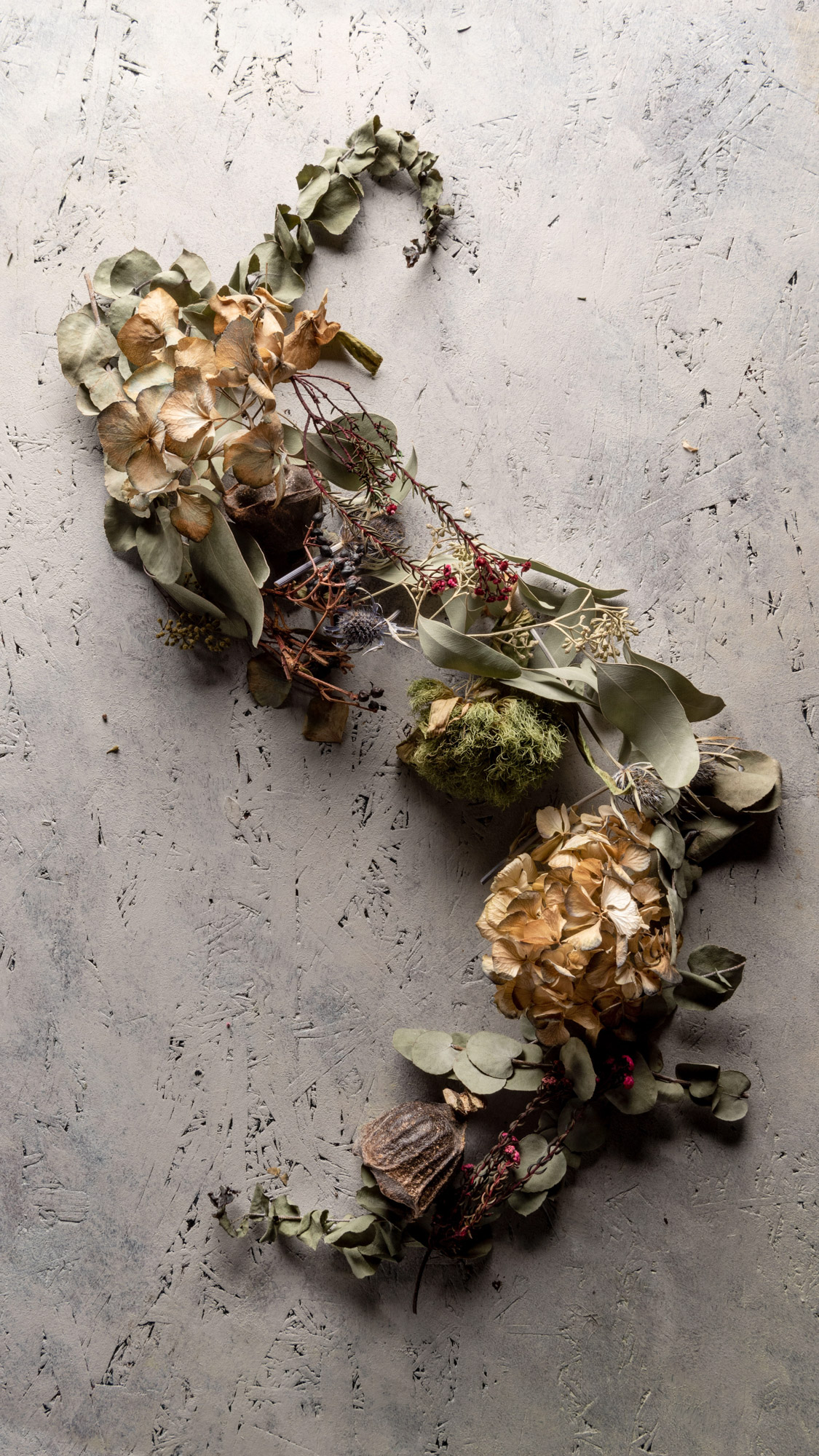
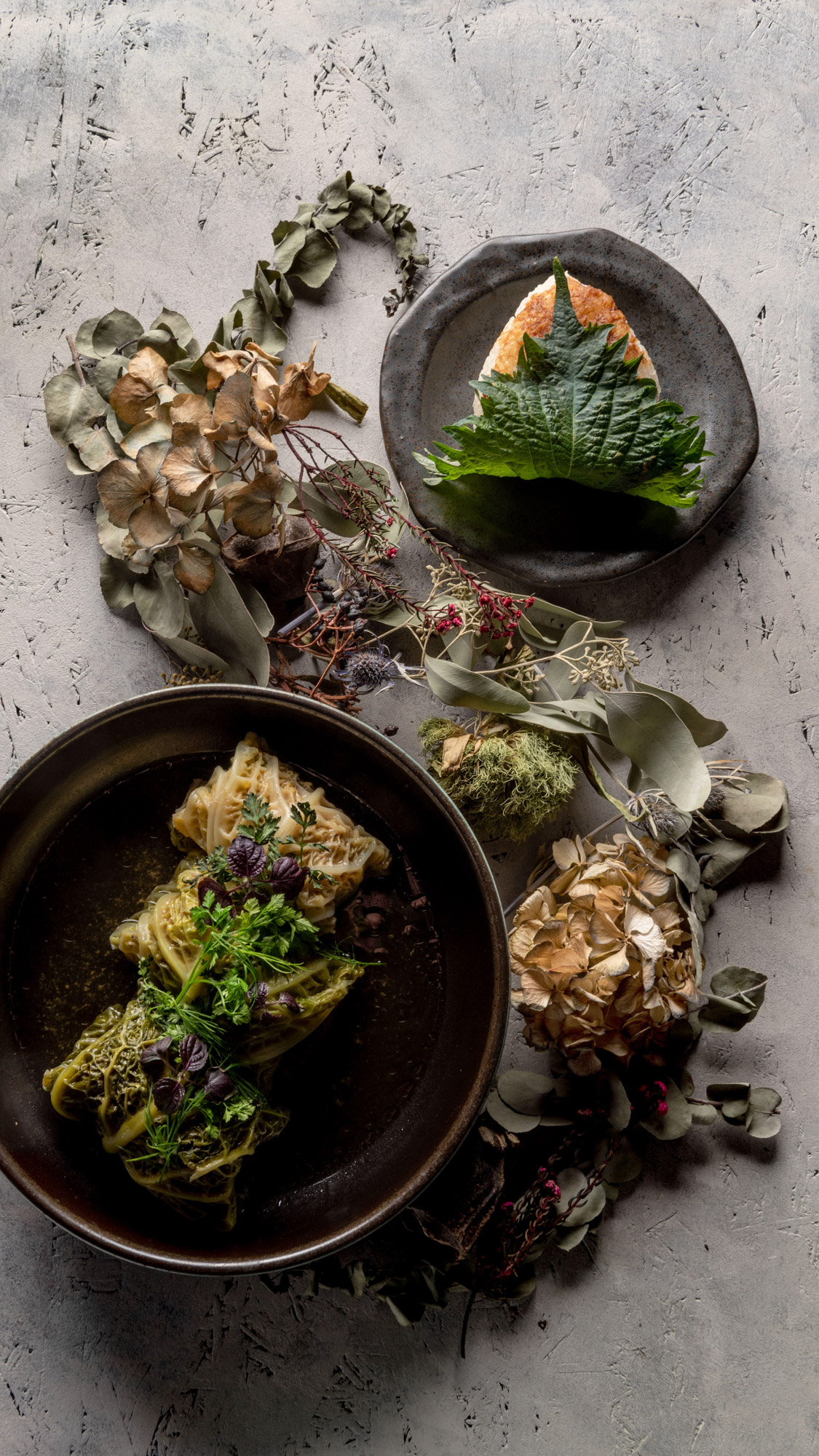
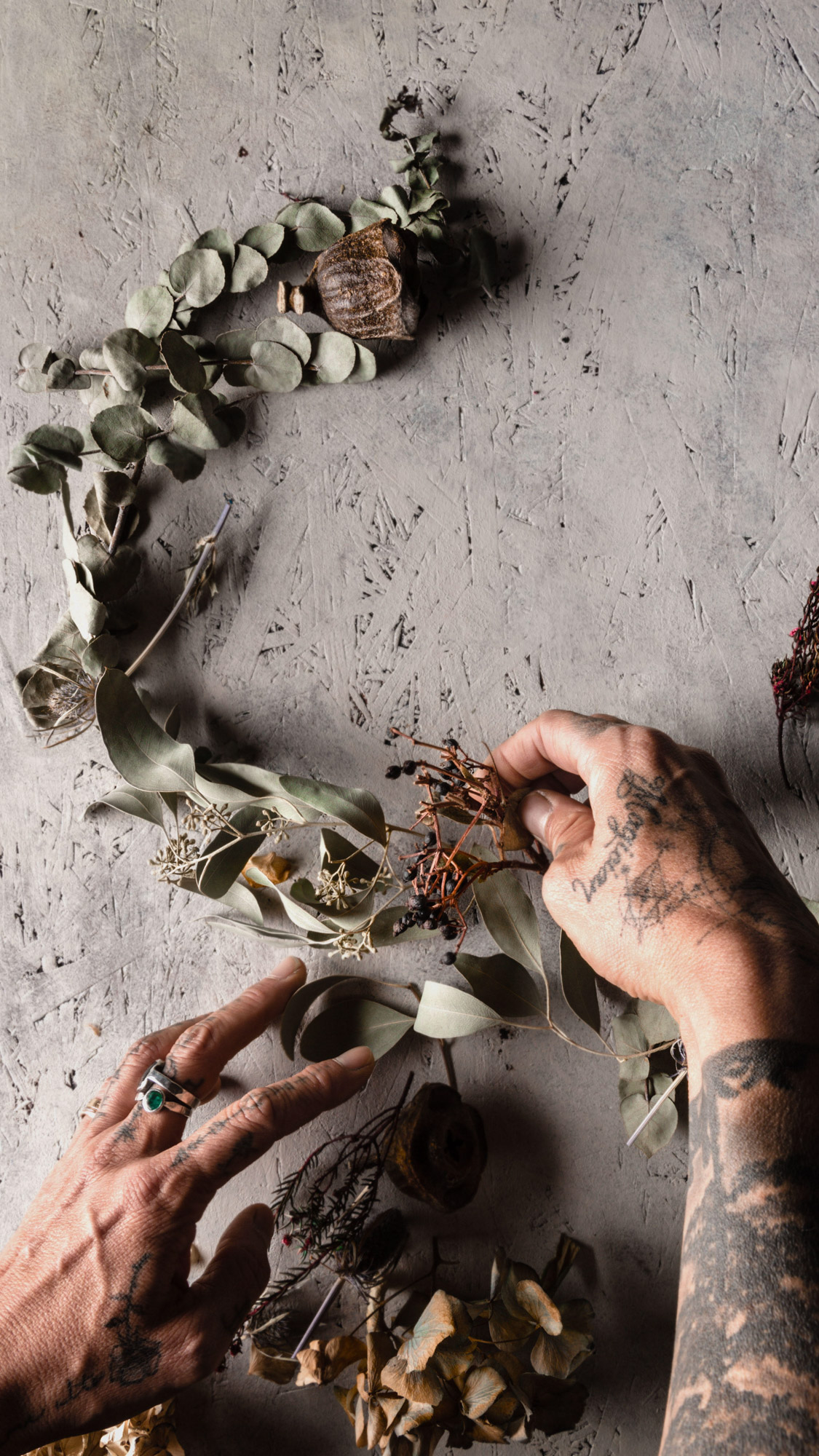
CABBAGE ROLLS: cabbage rolls stuffed with minced pork served in dashi broth with YAKIONIGIRI, an onigiri stuffed with katsuobushi, covered with miso sauce and Shiso leaf.
Do you find all this tasty, don't you? But even the eye wants its share. We know that the dishes of the Chefs of TENOHA Milano are always beautiful to see, but this time, thanks to the collaboration with Satie-san, Satoshi Kawamoto of the famous Green Fingers Market Milano, you can receive the fabulous dish with a set of "Dried flowers confetti". A chance more unique than rare, from 9 to 14 December 2020 pamper yourself with this great news all Japanese!
Follow the Instagram STORIES of TENOHA Milano to learn more!
Enjoy this set at home, feel immersed in the Japanese atmosphere and let us know with photos, videos and stories how special you find it. We at Japan Italy Bridge are ready to try it, follow also our stories to enjoy the Japanese colours and atmosphere of the collaboration of TENOHA Milano with Green Fingers Market Milano!
Instagram: @TENOHA Milano, @satie_san @greenfingersmarketmilano
photo credit: Anna Daverio







